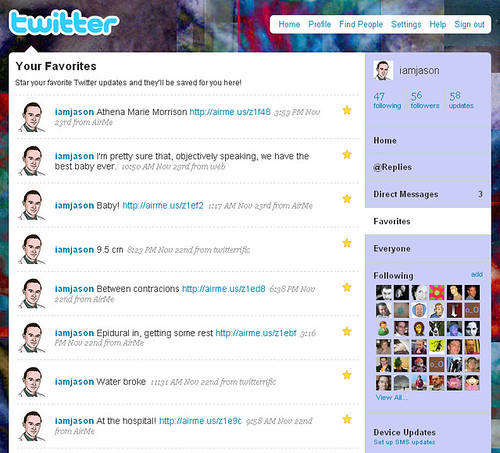I’ve been known to do geeky things. For one, I’ve been experimenting with putting parts of my life on the web live via Twitter. For another, I’ve been going to a 30-hour science fiction movie marathon with friends for the past 14 years.
It’s time to merge the two together in a Twitter Experiment this weekend. Starting on Friday, 7 p.m. EST I’ll be posting updates to Twitter about the movies, ridiculous sci-fi plot devices, funny cracks from the crowd, and the general movie marathon experience.
Now for some questions and answers:
Q: How can I follow along?
A: Follow me on Twitter and watch the snippets roll in. Alternatively, if you’re connected to me on Facebook you can watch my status updates, it’s the same thing.
Q: I’m going to be there, how can I participate?
Let me know in the comments below, we’ll make it a thing.
EDIT: Use hashtag #marathon34 in any Tweets.
Q: Why would anyone have even the slightest interest in this?
A: The CWRU Science Fiction Marathon is really an excuse for a bunch of sarcastic people to shout insults and rejoinders at a movie screen. It’s like a huge, live-action, sleep-deprived version of Mystery Science Theater 3000.
Q: No, I mean why would anyone have the slightest interest in you going to a movie marathon?
A: Point taken, its not like I’m famous or anything (outside of being temporarily internet famous in Australia, of course). Luckily many of my readers are friends, colleagues, and a bit geeky themselves. If you’re going to get a tiny-text-snippet tour through a science fiction marathon, though, I might as well be your guide – I have a fair knowledge of the genre, I used to be a movie reviewer, and I like to make sarcastic comments.
Q: How is this possible?
A: An iPhone, and WiFi or the regular data connection, that’s how. I might also play around with my G1 phone with Android a bit. If my connectivity fails for some reason, I reserve the right to basically give up and pretend I never even mentioned it.
—
One other thing I just can’t leave out of this post – when I mentioned this to my coworkers, they poked fun. My coworkers at Google. That’s right, I’m officially too geeky for Google.

